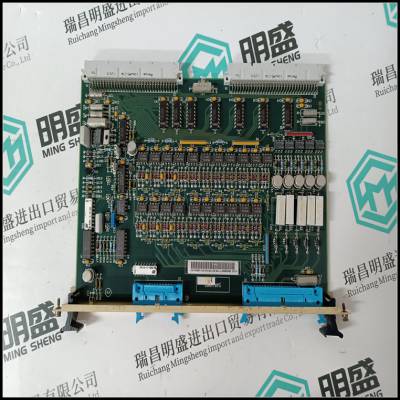 UV463G 用于安装在扩展输入和输出控制器 SIEMENS
¥3137.00
UV463G 用于安装在扩展输入和输出控制器 SIEMENS
¥3137.00
HITE303527R1 IDB772AR1 模拟量输入输出终端 ABB
- ¥3278.00 1 - 9
- ¥3137.00 ≥10
- 工控产品产品特性
- 否是否进口
- 美国产地
 UV463G 用于安装在扩展输入和输出控制器 SIEMENS
¥3137.00
UV463G 用于安装在扩展输入和输出控制器 SIEMENS
¥3137.00
HITE303527R1 IDB772AR1 模拟量输入输出终端 ABB
HITE303527R1 IDB772AR1 模拟量输入输出终端 ABB
但在压缩机运行时的设计条件和压缩机运行时返回空气条件之间变化
关闭。对于冷冻水,通过控制装置对水流进行节流
阀门允许旁通系数增加,并调节供气温度。更好的控制可以以牺牲
房间湿度略有增加。
对于可变风量(VAV),由于系统增益,***控制变得更加困难。有一个有限的趋势
整个过程在湿度图上向上移动,导致房间湿度增加。如果
供应空气温度随着空气量的减少而向上重置,
如经常推荐的。
设计师倾向于接受“标准”CFM
并使用任何TD结果。就CFM和线圈旁路系数而言,这可能是不现实的,而且几乎总是
这将导致控制差和温度波动大。包裹
单位CFM几乎总是可调的,应在
适当的值。
当你在重塑时,这个错误更容易犯
使用现有AHU重新布置区域。“CFM在那里,为什么不
“使用它”哲学可能会对舒适造成危害。
设计程序:***部分
下载自数字工程图书馆@McGraw-Hill()
版权所有©2004麦格劳-希尔公司。版权所有。
任何使用均受网站上给出的使用条款的约束。
76第三章
虽然本讨论涉及舒适性冷却,但显然,这些现象在以下系统中变得更加重要:
工艺冷却,特别是需要密切控制温度的工艺冷却
和湿度。然后再加热成为必要,但节能需要仔细检查线圈TD。
控制室内温度或室内相对湿度相对容易,但同时控制两者需要更多
复杂的控制系统和消耗更多的能量。
当将冷却CFM与热损失进行比较时,发现加热的温差因房间而异,或
从一个区域到另一个区域。如果变化很小,这将不是问题;
如果较大,可能需要在某些区域提供补充加热
房间或区域。表中的热损失是设计时的总热损失
条件,但不考虑发生的内部热增益
当房间被占用时。由于所有这些因素
“加热温差”没有实际意义,除非
早上6点左右无人居住的大楼。
此讨论有助于解释为什么某些建筑系统具有
很难让房客满意。业主的压力或设计师的经验不足通常会导致大面积控制区的荷载变化
由于occ,整个区域
HITE303527R1 IDB772AR1 模拟量输入输出终端 ABB
HITE303527R1 IDB772AR1 模拟量输入输出终端 ABB
but varies between the design condition when the compressor is running and the return-air condition when the compressor
is off. With chilled water, the throttling of water flow by the control
valve allows the bypass factor to increase and the supply air temperature to modulate. Better control can be obtained at the expense of a
slight increase in room humidity.
With variable air volume (VAV), accurate control becomes more difficult because of the system gains. There is a limited tendency for the
entire process to move upward on the psychrometric chart, with a resulting increase in room humidity. This will be more noticeable if the
supply air temperature is reset upward with decreasing air volume,
as frequently recommended.
There is a tendency among designers to accept the ‘‘standard’’ CFM
of a package AHU and to use whatever TD results. This can be unrealistic in terms of the CFM and coil bypass factor, and almost always
it will result in poor control and wide temperature swings. Package
unit CFMs are nearly always adjustable and should be specified at an
appropriate value.
This mistake is even easier to make when you are remodeling and
rearranging zones with existing AHUs. The ‘‘CFM is there, why not
use it,’’ philosophy can be hazardous to comfort.
Design Procedures: Part 1
Downloaded from Digital Engineering Library @ McGraw-Hill ()
Copyright © 2004 The McGraw-Hill Companies. All rights reserved.
Any use is subject to the Terms of Use as given at the website.
76 Chapter Three
While this discussion concerns comfort cooling, it should be apparent that these phenomena become even more important in systems for
process cooling, especially those requiring close control of temperature
and humidity. Then reheat becomes a necessity, but the need for energy conservation requires a careful look at the coil TD.
It is relatively easy to control either room temperature or room relative humidity, but to control both at the same time requires a more
complex control system and expends more energy.
When the cooling CFM is compared to the heat loss, the temperature difference for heating will be found to vary from room to room or
from zone to zone. If the variation is small, this will not be a problem;
if large, it may be necessary to provide supplemental heating in some
rooms or zones. The tabulated heat loss is a gross heat loss at design
conditions, but with no credit for the internal heat gains which occur
when the room is occupied. Because of all these factors, the tabulated
‘‘heating temperature difference’’ is not really meaningful except in an
unoccupied building at about 6 a.m.
This discussion helps explain why some building systems have a
hard time satisfying the tenants. Owner pressure, or designer inexperience, often results in large area control zones with loads that vary
across the zone due to occ
 在线问
在线问
- 工控产品
- 否
- 美国
- 否
- ABB
- TP854 3BSE025349R1
- 220V
- 60KHZ
- PLC模块
- DCS模块
- PLC模块DCS模块



